Ultrasound-Assisted Preparation of Hyaluronic Acid-Based Nanocapsules with an Oil Core
Abstract
1. Introduction
2. Materials and Methods
2.1. Materials
2.2. Degradation of Low Molecular Weight (H-HA)
2.3. Size Exclusion Chromatography (SEC)
2.4. Dynamic Light Scattering (DLS)
2.5. Zeta Potential Measurements
2.6. Turbidimetric Measurements
2.7. Conventional (TEM) and Cryogenic Transmission Electron Microscopy (Cryo-TEM)
2.8. Synthesis of HA-C12s
2.9. Preparation of HA-C12/Glyceryl Trioctanoate (GTO) Nanocapsules
3. Molecular Dynamics (MD) Simulations
3.1. Simulated Systems and Models
3.2. Details of Simulations
4. Results and Discussion
4.1. Degradation of High-Molecular-Weight Hyaluronic Acid (H-HA)
4.2. Synthesis of Amphiphilic HAs (AmHAs)
4.3. Measurements of Critical Aggregation Concentration (CAC)
4.4. TEM Visualization
4.5. Preparation of Oil-Filled Nanocapsules (NCs)
4.6. NC Stability
4.7. The Interaction between HA-C12 and GTO Nanodroplet
4.8. Impact of the GTO-HA-C12 Interaction on the Hydration and Flexibility of the HA Chain
5. Conclusions
Supplementary Materials
Author Contributions
Funding
Institutional Review Board Statement
Informed Consent Statement
Data Availability Statement
Acknowledgments
Conflicts of Interest
References
- Freitas, R.A., Jr. Nanomedicine Volume 1: Basic Capabilities; Landes Bioscience: Austin, TX, USA, 1999. [Google Scholar]
- Bobo, D.; Robinson, K.J.; Islam, J.; Thurecht, K.J.; Corrie, S.R. Nanoparticle-Based Medicines: A Review of FDA-Approved Materials and Clinical Trials to Date. Pharm. Res. 2016, 33, 2373–2387. [Google Scholar] [CrossRef]
- Allen, T.M.; Cullis, P.R. Drug delivery systems: Entering the mainstream. Science 2004, 303, 1818–1822. [Google Scholar] [CrossRef]
- Peleteiro, M.; Presas, E.; González-Aramundiz, J.V.; Sánchez-Correa, B.; Simón-Vázquez, R.; Csaba, N.; Alonso, M.J.; González-Fernández, Á. Polymeric Nanocapsules for Vaccine Delivery: Influence of the Polymeric Shell on the Interaction with the Immune System. Front. Immunol. 2018, 9, 791. [Google Scholar] [CrossRef]
- Bednorz, J.; Smela, K.; Zapotoczny, S. Tailoring Properties of Hyaluronate-Based Core–Shell Nanocapsules with Encapsulation of Mixtures of Edible Oils. Int. J. Mol. Sci. 2023, 24, 14995. [Google Scholar] [CrossRef]
- Cadete, A.; Olivera, A.; Besev, M.; Dhal, P.K.; Gonçalves, L.; Almeida, A.J.; Bastiat, G.; Benoit, J.; Fuente, M.; Garcia-Fuentes, M.; et al. Self-assembled hyaluronan nanocapsules for the intracellular delivery of anticancer drugs. Sci. Rep. 2019, 9, 11565. [Google Scholar] [CrossRef]
- Virginia, M.P.; Szoka, F.C., Jr. Anticancer Therapeutics: Targeting Macromolecules and Nanocarriers to Hyaluronan or CD44, a Hyaluronan Receptor. Mol. Pharm. 2008, 5, 474–486. [Google Scholar] [CrossRef]
- Youm, I.; Agrahari, V.; Murowchick, J.B.; Youan, B.C. Uptake and Cytotoxicity of Docetaxel-Loaded Hyaluronic Acid-Grafted Oily Core Nanocapsules in MDA-MB 231 Cancer Cells. Pharm. Res. 2014, 31, 2439–2452. [Google Scholar] [CrossRef]
- Tan, C.; Yao, X.; Jafari, S.M.; Sun, B.; Wang, J. Hyaluronic acid-based nanodelivery systems for food bioactive compounds. Trends Food Sci. Technol. 2023, 141, 104163. [Google Scholar] [CrossRef]
- Szafraniec, J.; Błazejczyk, A.; Kus, E.; Janik, M.; Zajac, G.; Wietrzyk, J.; Chlopicki, S.; Zapotoczny, S. Robust oil-core nanocapsules with hyaluronate-based shells as promising nanovehicles for lipophilic compounds. Nanoscale 2017, 9, 18867–18880. [Google Scholar] [CrossRef]
- Szafraniec-Szczesny, J.; Janik-Hazuka, M.; Odrobinska, J.; Zapotoczny, S. Polymer Capsules with Hydrophobic Liquid Cores as Functional Nanocarriers. Polymers 2020, 12, 1999. [Google Scholar] [CrossRef]
- Dosio, F.; Arpicco, S.; Stella, B.; Fattal, E. Hyaluronic acid for anticancer drug and nucleic acid delivery. Advanced Drug Delivery Reviews 2016, 97, 204–236. [Google Scholar] [CrossRef]
- Schanté, C.E.; Zuber, G.; Herlin, C.; Vandamme, T.F. Chemical modifications of hyaluronic acid for the synthesis of derivatives for a broad range of biomedical applications. Carbohydr. Polym. 2011, 85, 469–489. [Google Scholar] [CrossRef]
- Powell, J.D.; Horton, M.R. Threat matrix: Low-molecular-weight hyaluronan (HA) as a danger signal. Immunol. Res. 2005, 31, 207–218. [Google Scholar] [CrossRef]
- Dubrovin, E.V.; Barinov, N.A.; Ivanov, D.A.; Klinov, D.V. Single-molecule AFM study of hyaluronic acid softening in electrolyte solutions. Carbohydr. Polym. 2023, 303, 120472. [Google Scholar] [CrossRef]
- Zatorska-Płachta, M.; Łazarski, G.; Maziarz, U.; Forys, A.; Trzebicka, B.; Wnuk, D.; Chołuj, K.; Karewicz, A.; Michalik, M.; Jamroz, D.; et al. Encapsulation of curcumin in polystyrene-based nanoparticles-drug loading capacity and cytotoxicity. ACS Omega 2021, 6, 12168–12178. [Google Scholar] [CrossRef]
- Górniewicz, M.; Wnuk, D.; Foryś, A.; Trzebicka, B.; Michalik, M.; Kepczynski, M. Chondroitin Sulfate-Based Nanocapsules as Nanocarriers for Drugs and Nutraceutical Supplements. Int. J. Mol. Sci. 2024, 25, 5897. [Google Scholar] [CrossRef]
- Jo, S.; Kim, T.; Iyer, V.G.; Im, W. CHARMM-GUI: A Web-based Graphical User Interface for CHARMM. J. Comput. Chem. 2008, 29, 1859–1865. [Google Scholar] [CrossRef]
- Jo, S.; Song, K.C.; Desaire, H.; MacKerell, A.D., Jr.; Im, W. Glycan Reader: Automated Sugar Identification and Simulation Preparation for Carbohydrates and Glycoproteins. J. Comput. Chem. 2011, 32, 3135–3141. [Google Scholar] [CrossRef]
- Park, S.-J.; Lee, J.; Patel, D.S.; Ma, H.; Lee, H.S.; Jo, S.; Im, W. Glycan Reader is Improved to Recognize Most Sugar Types and Chemical Modifications in the Protein Data Bank. Bioinformatics 2017, 33, 3051–3057. [Google Scholar] [CrossRef]
- Park, S.-J.; Lee, J.; Qi, Y.; Kern, N.R.; Lee, H.S.; Jo, S.; Joung, I.S.; Joo, K.; Lee, J.; Im, W. CHARMM-GUI Glycan Modeler for Modeling and Simulation of Carbohydrates and Glycoconjugates. Glycobiology 2019, 29, 320–331. [Google Scholar] [CrossRef]
- Abraham, M.; Alekseenko, A.; Bergh, C.; Blau, C.; Briand, E.; Doijade, M.; Fleischmann, S.; Gapsys, V.; Garg, G.; Gorelov, S.; et al. GROMACS 2023 Manual (Version 2023); GROMACS Development Team: Stockholm, Sweden, 2023. [Google Scholar]
- Abraham, M.J.; Murtola, T.; Schulz, R.; P áll, S.; Smith, J.C.; Hess, B.; Lindahl, E. GROMACS: High performance molecular simulations through multi-level parallelism from laptops to supercomputers. SoftwareX 2015, 1–2, 19–25. [Google Scholar] [CrossRef]
- Berendsen, H.J.C.; Postma, J.P.M.; van Gunsteren, W.F.; DiNola, A.; Haak, J.R. Molecular dynamics with coupling to an external bath. J. Chem. Phys. 1984, 81, 3684–3690. [Google Scholar] [CrossRef]
- Nose, S. A molecular dynamics method for simulations in the canonical ensemble. Mol. Phys. 1983, 52, 255–268. [Google Scholar] [CrossRef]
- Parrinello, M.; Rahman, A. Polymorphic transitions in single crystals: A new molecular dynamics method. J. Appl. Phys. 1981, 52, 7182–7190. [Google Scholar] [CrossRef]
- Darden, T.; York, D.; Pedersen, L. Particle Mesh Ewald: An Nlog(N) Method for Ewald Sums in Large Systems. J. Chem. Phys. 1993, 98, 10089–10092. [Google Scholar] [CrossRef]
- Dřímalová, E.; Velebný, V.; Sasinková, V.; Hromádková, Z.; Ebringerová, A. Degradation of hyaluronan by ultrasonication in comparison to microwave and conventional heating. Carbohydr. Polym. 2005, 61, 420–426. [Google Scholar] [CrossRef]
- Hafsa, J.; Chaouch, M.A.; Charfeddine, B.; Rihouey, C.; Limem, K.; Le Cerf, D.; Rouatbia, S.; Majdoub, H. Effect of ultrasonic degradation of hyaluronic acid extracted from rooster comb on antioxidant and antiglycation activities. Pharm. Biol. 2017, 55, 156–163. [Google Scholar] [CrossRef]
- Miyazaki, T.; Yomota, C.; Okada, S. Ultrasonic depolymerization of hyaluronic acid. Polymer Degrad. Stab. 2001, 74, 77–85. [Google Scholar] [CrossRef]
- Zak, A.; Łazarski, G.; Wytrwal-Sarna, M.; Jamroz, D.; Gorniewicz, M.; Forys, A.; Trzebicka, B.; Kepczynski, M. Molecular insights into the self-assembly of hydrophobically modified chondroitin sulfate in aqueous media. Carbohydr. Polym. 2022, 297, 119999. [Google Scholar] [CrossRef]
- Eenschooten, C.; Vaccaro, A.; Delie, F.; Guillaumie, F.; Tømmeraas, K.; Kontogeorgis, G.M.; Schwach-Abdellaoui, K.; Borkovec, M.; Gurny, R. Novel self-associative and multiphasic nanostructured soft carriers based on amphiphilic hyaluronic acid derivatives. Carbohydr. Polym. 2012, 87, 444–451. [Google Scholar] [CrossRef]
- Ondreas, F.; Dusankova, M.; Sita, J.; Cepa, M.; Stepan, J.; Belsky, P.; Velebny, V. Self-assembly of hydrophobically modified hyaluronic acid. Appl. Surf. Sci. 2021, 546, 149161. [Google Scholar] [CrossRef]
- Han, S.M.; Kim, J.C.; Shin, Y.; Lee, D.; Sim, T.; Lim, C.; Kang, K.; Lee, E.S.; Youn, Y.S.; Oh, K.T. Development of a pH-Responsive Polymer Based on Hyaluronic Acid Conjugated with Imidazole and Dodecylamine for Nanomedicine Delivery. Macromol. Res. 2022, 30, 547–556. [Google Scholar] [CrossRef]
- Velcer, T.; Mravec, F.; Venerova, T.; Chang, C.; Pekar, M. Fluorescence study of some structural and compositional effects on the aggregation of hydrophobized hyaluronan. Colloid Interface Sci. Commun. 2022, 51, 100677. [Google Scholar] [CrossRef]
- Pelletier, S.; Hubert, P.; Lapicque, F.; Payan, E.; Dellacherie, E. Amphiphilic derivatives of sodium alginate and hyaluronate: Synthesis and physico-chemical properties of aqueous dilute solutions. Carbohydr. Polym. 2000, 43, 343–349. [Google Scholar] [CrossRef]
- Taweechat, P.; Pandey, R.B.; Sompornpisuta, P. Conformation, flexibility and hydration of hyaluronic acid by molecular dynamics simulations. Carbohydr. Res. 2020, 493, 108026. [Google Scholar] [CrossRef]

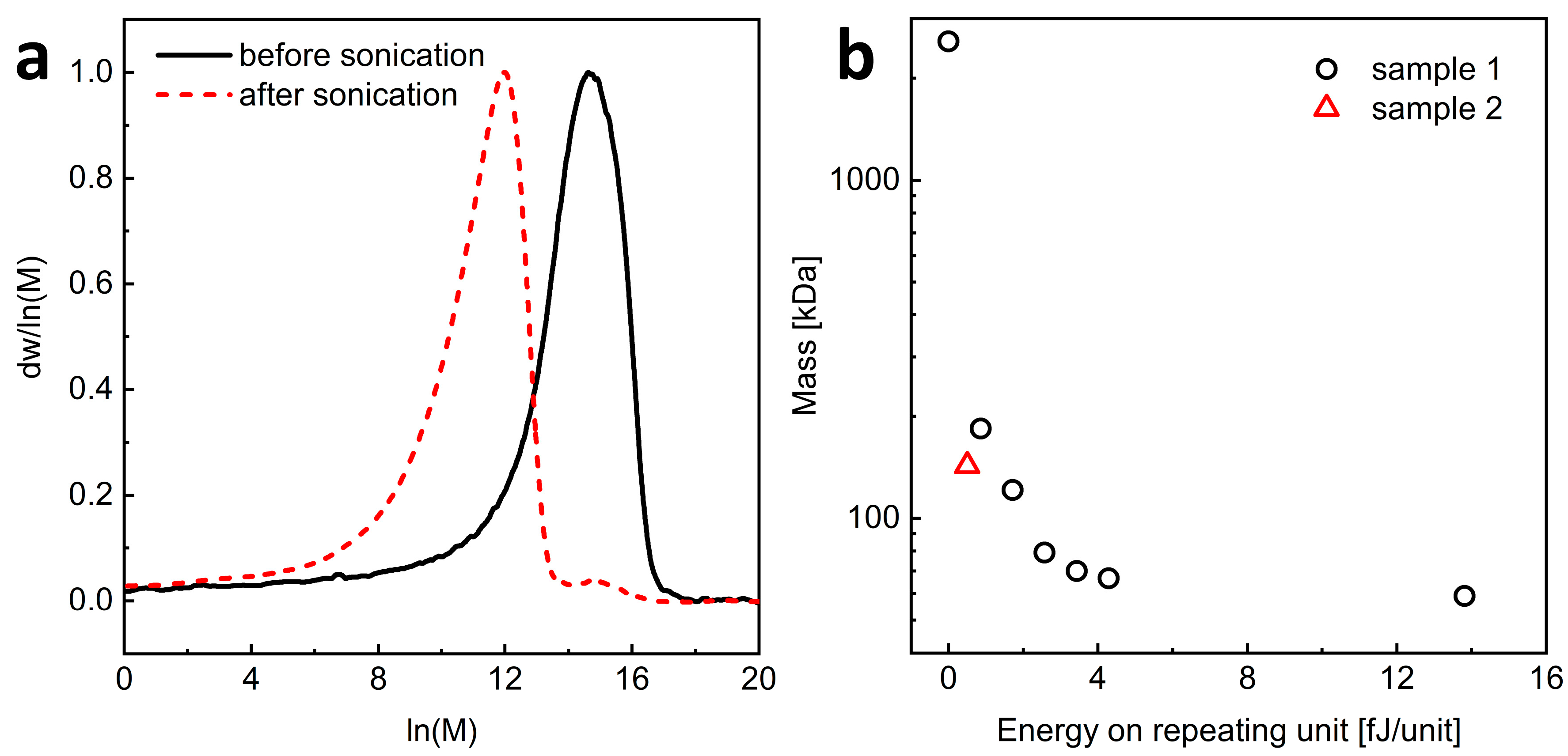
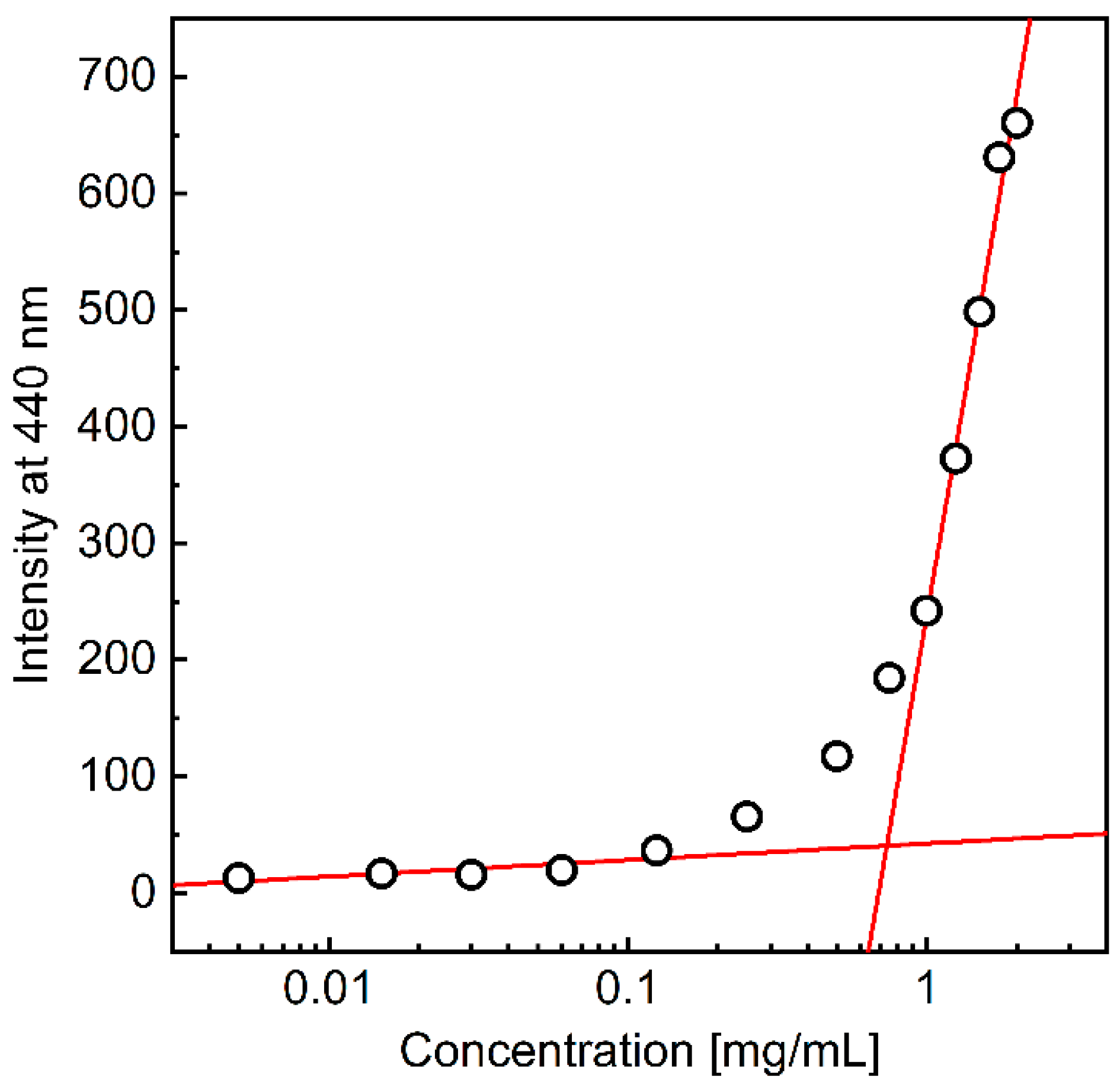
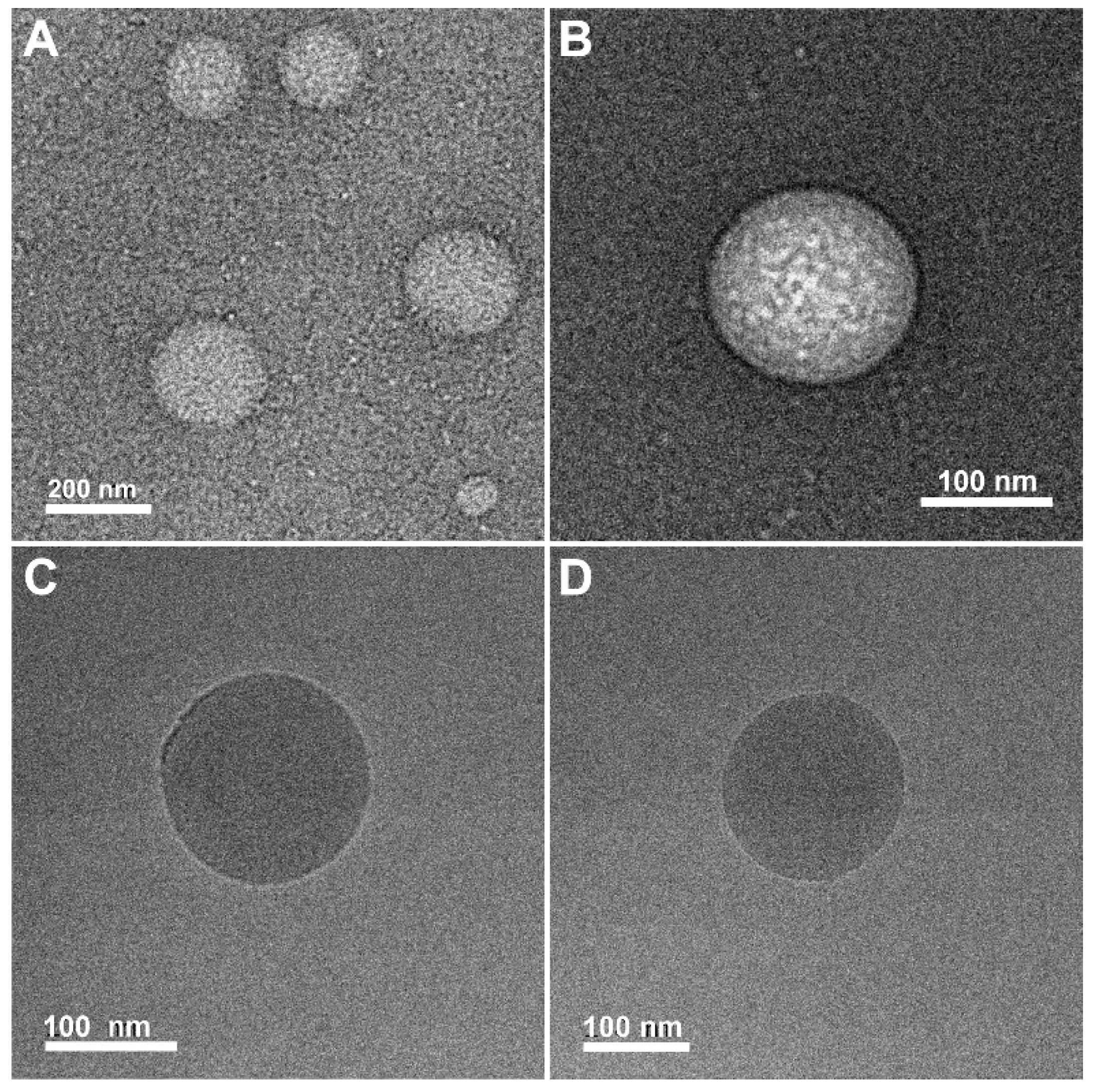
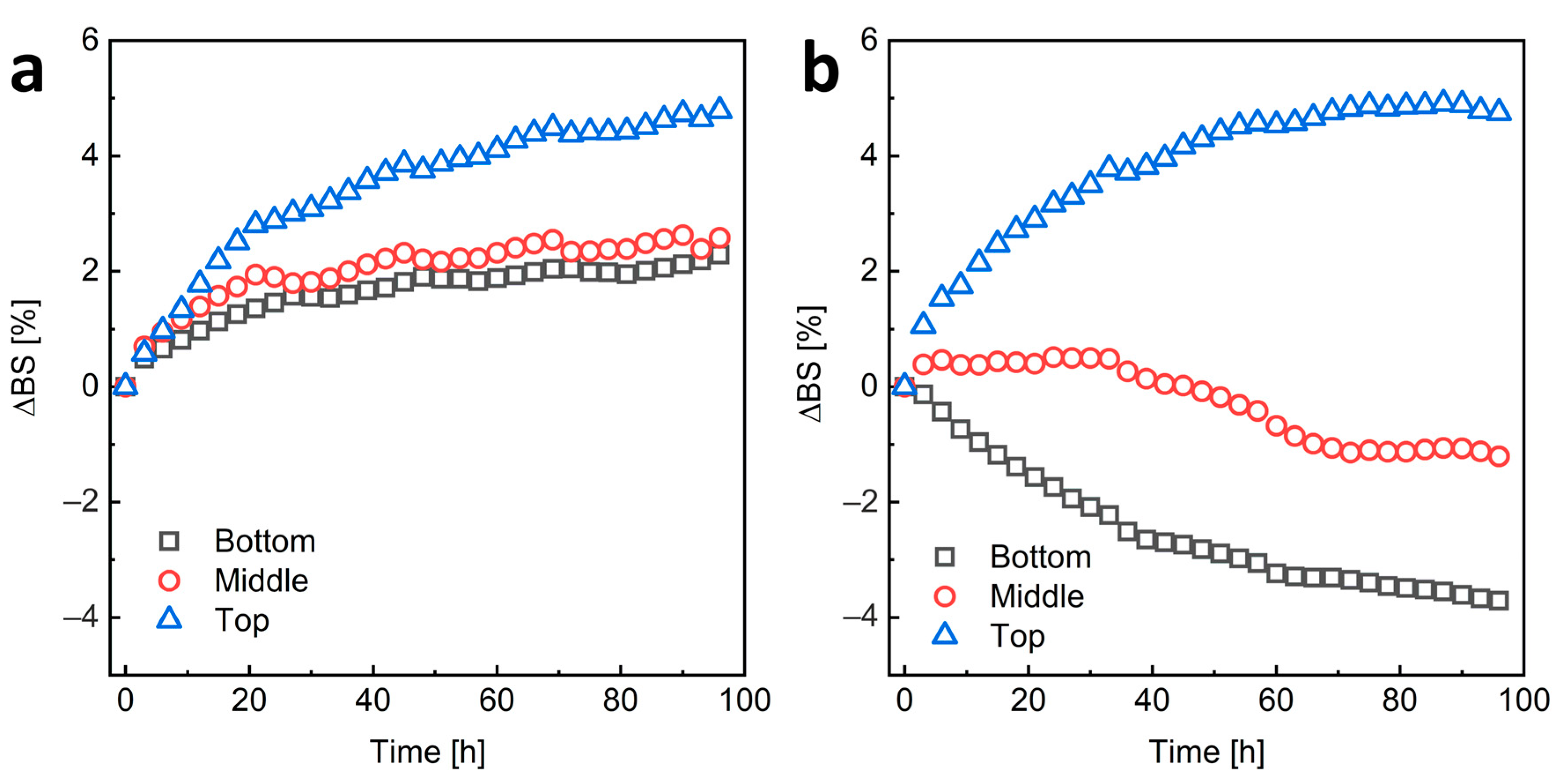

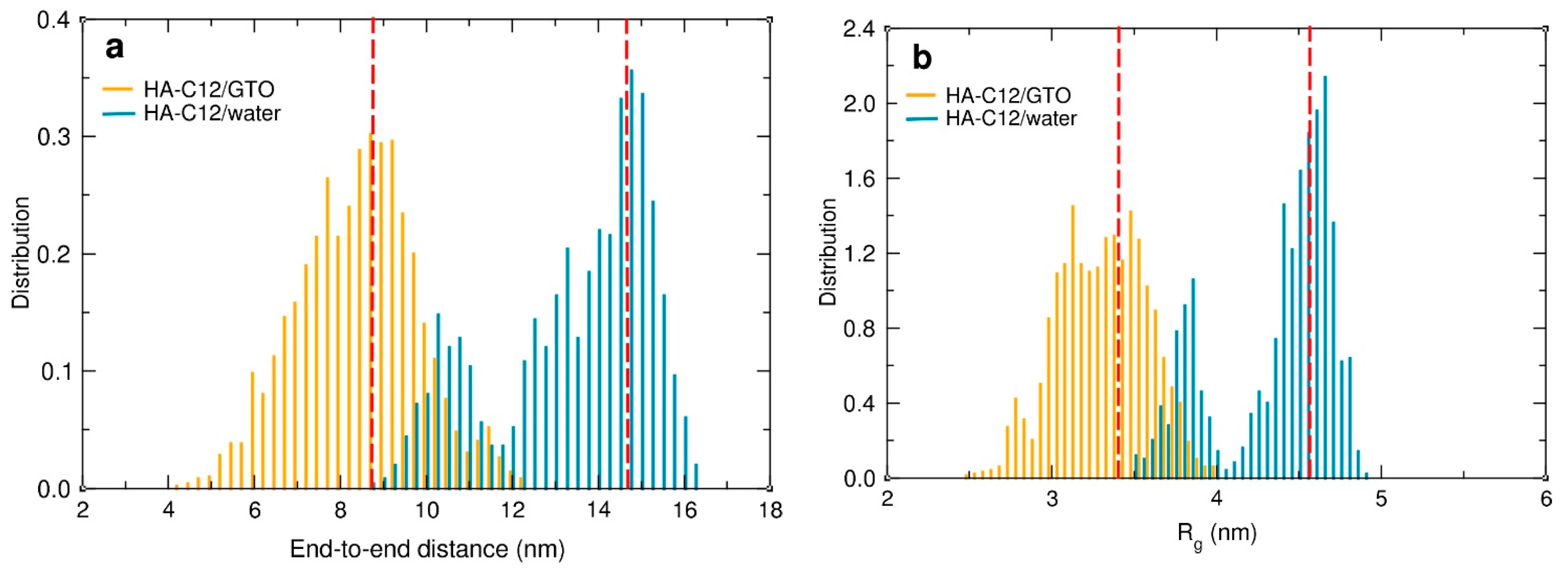

| Polymer | DS [%] | CAC [µg/mL] (n = 2) | Dh [nm] | PDI | ζ [mV] (n = 3) |
|---|---|---|---|---|---|
| L-HA-C12 | 17.4 | 73.5 ± 3.2 | - | - | −27.4 ± 0.7 |
| H-HA-C12 | 17.0 | 79.2 ± 3.9 | - | - | −16.1 ± 0.5 |
| L-HA-C12/GTO | - | - | 244 | 0.38 | −26.5 ± 0.4 |
| H-HA-C12/GTO | - | - | 165 | 0.52 | −3.6 ± 0.45 |
Disclaimer/Publisher’s Note: The statements, opinions and data contained in all publications are solely those of the individual author(s) and contributor(s) and not of MDPI and/or the editor(s). MDPI and/or the editor(s) disclaim responsibility for any injury to people or property resulting from any ideas, methods, instructions or products referred to in the content. |
© 2024 by the authors. Licensee MDPI, Basel, Switzerland. This article is an open access article distributed under the terms and conditions of the Creative Commons Attribution (CC BY) license (https://creativecommons.org/licenses/by/4.0/).
Share and Cite
Rajtar, N.; Łazarski, G.; Foryś, A.; Otulakowski, Ł.; Trzebicka, B.; Jamróz, D.; Kepczynski, M. Ultrasound-Assisted Preparation of Hyaluronic Acid-Based Nanocapsules with an Oil Core. Materials 2024, 17, 4524. https://doi.org/10.3390/ma17184524
Rajtar N, Łazarski G, Foryś A, Otulakowski Ł, Trzebicka B, Jamróz D, Kepczynski M. Ultrasound-Assisted Preparation of Hyaluronic Acid-Based Nanocapsules with an Oil Core. Materials. 2024; 17(18):4524. https://doi.org/10.3390/ma17184524
Chicago/Turabian StyleRajtar, Natan, Grzegorz Łazarski, Aleksander Foryś, Łukasz Otulakowski, Barbara Trzebicka, Dorota Jamróz, and Mariusz Kepczynski. 2024. "Ultrasound-Assisted Preparation of Hyaluronic Acid-Based Nanocapsules with an Oil Core" Materials 17, no. 18: 4524. https://doi.org/10.3390/ma17184524
APA StyleRajtar, N., Łazarski, G., Foryś, A., Otulakowski, Ł., Trzebicka, B., Jamróz, D., & Kepczynski, M. (2024). Ultrasound-Assisted Preparation of Hyaluronic Acid-Based Nanocapsules with an Oil Core. Materials, 17(18), 4524. https://doi.org/10.3390/ma17184524









